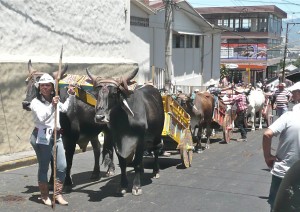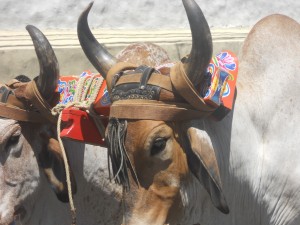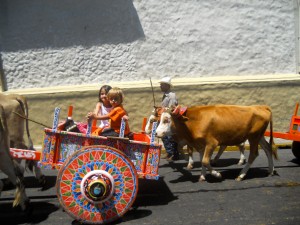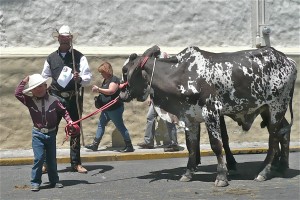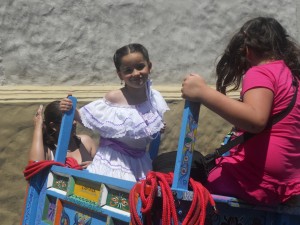What’s a boyero? I wondered, when I saw a notice for the Día National del Boyeros, a festival held in San Antonio de Escazu, in the Central Valley. A boyero, it turns out, is a man who drives an oxcart. A woman driving an oxcart would be a boyera.
Though we don’t see many oxcarts on Casta Rica’s roads now, the conveyance was once ubiquitous here. The ox-drawn cart was how a farmer got his crops to buyers in the days, not all that long ago, before cars and asphalt roads. During the festival, tribute is paid to this colorful past.
What’s an ox? I wondered next. I could see it was some kind of cow, but there’s a slight difference. For those of you who are city people, like me, an ox is a bull, usually castrated, who is trained to pull a cart.
We decided to drive to Escazu for the parade, with its 300 promised painted oxcarts, and for once, we didn’t get lost.
As we were leaving, I said, “Let’s take something to read while we’re waiting for things to start.” I was certain, based on prior experiences, that we’d have time to kill, but the parade started almost on time, with the ear-piercing blast of an ambulance siren, followed by the baleful bellows of bulls.
The event turned out to be pure eye candy. The carts were painted in intricate patterns reminiscent of Pennsylvania Dutch hex signs. The boyeros, holding long poles with sharp spears on the end, walked in front of the carts, driving the oxen, (buyes) yolked in pairs, and colorfully decorated.
Family members, from gorgeous little girls to grandmothers, sat inside, or walked along.
It turns out that oxen are unruly, which might have made the parade exciting, as well as visually pleasing, but for the most part, the boyeros, young and old, male and female, held the brave beautiful bulls in check.

